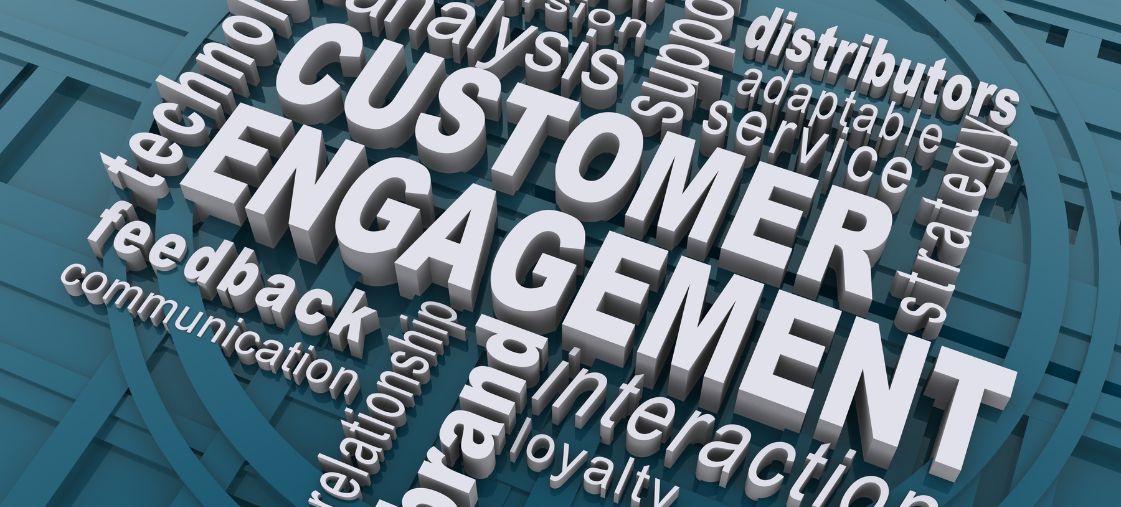
Key Engagement Metrics That Will Transform Your Customer Relationships
Customer engagement metrics are essential for businesses looking to build stronger relationships with their customers. These metrics provide valuable insights into the interactions between customers and brands across various channels, including website visits, social media engagement, email responses, and support interactions.
By understanding these metrics, businesses can:
- Track customer satisfaction at every stage of their journey
- Identify potential issues before they impact retention
- Measure the effectiveness of marketing initiatives
- Create personalized experiences based on data-driven insights
- Build lasting relationships through targeted improvements
This article explores essential engagement metrics that will help you measure and optimize customer loyalty, satisfaction, and experience. You’ll discover practical ways to transform raw data into actionable strategies that drive meaningful customer connections.
To truly understand what customer engagement means, it’s crucial to delve into the key metrics that define it. These metrics not only help in tracking customer satisfaction but also in identifying potential issues before they impact retention.
Moreover, with the rise of digital marketing, businesses can now leverage tools such as Anstrex, which allows them to dominate push notification advertising by spying on the most profitable advertisers and marketers. This is just one example of how understanding customer engagement metrics can lead to more effective marketing initiatives and ultimately create personalized experiences based on data-driven insights.

1. Net Promoter Score (NPS)
Net Promoter Score is a powerful metric that measures customer loyalty through a single, direct question: “On a scale of 0-10, how likely are you to recommend our brand to a friend or colleague?”
Understanding the Scoring System
The scoring system categorizes responses into three groups:
- Promoters (9-10): Loyal enthusiasts who fuel growth
- Passives (7-8): Satisfied but unenthusiastic customers
- Detractors (0-6): Unhappy customers who can damage brand reputation
How to Calculate NPS
To calculate your NPS, subtract the percentage of detractors from the percentage of promoters. The resulting score ranges from -100 to +100.
Examples of Successful NPS Implementation
Companies like Apple and Tesla have mastered NPS implementation:
- Apple maintains an impressive NPS of 72 by creating brand advocates through exceptional product experiences.
- Tesla’s NPS of 96 demonstrates how strong customer loyalty drives organic growth through word-of-mouth marketing.
What Your NPS Can Tell You
Your NPS reveals deeper insights beyond customer satisfaction:
- Identifies potential brand ambassadors
- Highlights areas needing improvement
- Predicts customer retention rates
- Guides resource allocation for customer experience enhancement
The Importance of Regular NPS Tracking
Regular NPS tracking enables businesses to spot trends, address issues proactively, and nurture customer relationships that drive sustainable growth.
2. Customer Satisfaction Score (CSAT)
CSAT measures your customers’ immediate satisfaction with specific interactions, products, or services. This metric captures direct feedback through a simple rating scale, typically 1-5 or 1-10, where customers rate their experience from “highly unsatisfied” to “highly satisfied.”
You can collect CSAT data through multiple channels:
- Post-purchase surveys: Quick feedback forms after completing a transaction
- Support ticket resolution: Rating requests following customer service interactions
- Product usage milestones: Surveys at key points in the customer journey
- Email campaigns: Targeted feedback requests to specific customer segments
The CSAT calculation follows a straightforward formula:
CSAT = (Number of satisfied customers / Total number of survey responses) x 100
A high CSAT score indicates your products or services meet customer expectations, while low scores highlight areas needing improvement. Leading brands like Amazon and Apple maintain CSAT scores above 85%, demonstrating strong alignment between customer expectations and delivery.
You’ll find CSAT particularly valuable for:
- Identifying specific pain points in customer interactions
- Measuring the impact of product updates or service changes
- Comparing performance across different business units or locations
- Creating data-driven strategies for product development
3. Churn Rate
Churn rate measures the percentage of customers who stop using your product or service within a specific time period. A high churn rate signals potential issues with your product, pricing, or customer experience that need immediate attention.
Impact on Business Growth:
- Lost revenue from canceled subscriptions
- Increased customer acquisition costs
- Reduced customer lifetime value
- Negative impact on brand reputation
You can calculate churn rate using this formula:
(Lost Customers ÷ Total Customers at Start of Period) × 100
Effective Strategies to Reduce Churn:
- Early Warning System
- Track usage patterns
- Monitor customer feedback
- Identify declining engagement
- Proactive Customer Outreach
- Personalized check-ins
- Regular product updates
- Educational content
- Retention Incentives
- Loyalty rewards
- Custom pricing plans
- Extended trial periods
- Premium feature access
Successful companies like Netflix and Amazon maintain low churn rates by continuously analyzing customer behavior and implementing targeted retention strategies. Netflix uses viewing history to recommend personalized content, while Amazon’s Prime membership bundles multiple services to increase customer value.
4. Conversion Rate Optimization (CRO)
Conversion Rate Optimization transforms passive website visitors into active participants who take desired actions. Your conversion rate represents the percentage of users who complete specific goals – from newsletter sign-ups to product purchases.
Key Elements of CRO:
- Landing page effectiveness
- Call-to-action button placement
- Website loading speed
- Form design and length
- Checkout process simplicity
A successful CRO strategy relies on continuous testing and refinement. A/B testing different elements helps identify what resonates with your audience:
- Test button colors and text variations
- Compare different headline formats
- Experiment with form field arrangements
- Try various product image placements
Practical CRO Techniques:
- Remove unnecessary form fields
- Add trust signals like security badges
- Display social proof through reviews
- Create clear value propositions
- Implement mobile-responsive design
User behavior analysis tools reveal how visitors interact with your site. Heat maps show where users click, scroll, and spend time. This data guides strategic placement of crucial elements to maximize engagement potential.
The most effective CRO strategies focus on reducing friction points in the user journey. Simple changes like streamlining navigation or adding progress indicators can significantly boost conversion rates.
5. Social Media Engagement Metrics
Social media engagement metrics reveal the direct impact of your content on audience behavior across platforms. These vital indicators measure how users interact with your brand’s social media presence:
Key Platform-Specific Metrics:
- Facebook: Reactions, shares, comments, click-through rates
- Instagram: Saves, story views, profile visits, reach
- Twitter: Retweets, quote tweets, likes, reply rates
- LinkedIn: Post impressions, connection growth, content engagement
Your social media performance tracking should focus on these essential metrics:
- Engagement Rate = (Total Interactions ÷ Total Followers) × 100
- Amplification Rate = Number of Shares ÷ Total Followers
- Virality Rate = (Shares ÷ Impressions) × 100
Regular monitoring of these metrics helps identify content that resonates with your audience. A spike in saves or shares indicates high-value content, while increased comment rates show active community participation. Tracking follower growth patterns reveals your brand’s expanding influence and reach across social platforms.
Advanced social analytics tools like Hootsuite, Sprout Social, or Buffer provide detailed insights into these metrics, enabling data-driven adjustments to your social media strategy.
6. Customer Lifetime Value (CLV) Calculation
Customer Lifetime Value represents the total monetary value a business can expect from a customer throughout their relationship. This crucial metric helps businesses make informed decisions about customer acquisition costs and retention strategies.
Basic CLV Calculation Formula:
CLV = Average Purchase Value × Average Purchase Frequency × Average Customer Lifespan
Advanced CLV Calculation Methods:
- Historical Method: Analyzes past purchase behavior, calculates actual spending patterns, and provides concrete data-based insights.
- Predictive Method: Uses machine learning algorithms, forecasts future buying behavior, and incorporates market trends analysis.
Companies can enhance their CLV calculations by factoring in:
- Customer acquisition costs
- Marketing expenses
- Support and service costs
- Product margins
- Inflation rates
Real-Time CLV Tracking
Modern analytics platforms enable businesses to monitor CLV changes dynamically. This real-time tracking helps identify high-value customers and optimize marketing spend for specific customer segments. The future of such tracking is bright, with future trends in marketing analytics poised to change the game significantly.
The most effective CLV calculations combine both historical data and predictive analytics to create a comprehensive view of customer value. This hybrid approach allows businesses to make data-driven decisions about resource allocation and customer engagement strategies.
7. Customer Effort Score (CES) Measurement Techniques
Customer Effort Score measures the ease or difficulty customers experience when interacting with your brand. This metric directly impacts customer loyalty – research shows customers are 4x more likely to become disloyal after high-effort experiences.
Here’s how to effectively measure CES:
1. Post-Interaction Surveys
Send brief surveys immediately after key touchpoints:
- Product purchases
- Customer service interactions
- Account setup processes
- Technical support resolutions
2. Rating Scale Options
Choose from the following rating scale options:
- 1-5 scale: “Very Difficult” to “Very Easy”
- 1-7 scale: Provides more granular feedback
- Agree/Disagree statements: “The company made it easy to handle my issue”
3. Follow-Up Questions
Include follow-up questions to gain deeper insights:
- “What made this experience difficult?”
- “How could we have made this easier?”
- “Which specific steps caused friction?”
You can enhance CES data collection by:
- Keeping surveys short and focused
- Using mobile-friendly formats
- Automating survey triggers
- Analyzing feedback patterns across different customer segments
Companies like Amazon and Apple regularly track CES to identify pain points in their customer journey and streamline processes that cause friction.
Tools for Tracking Key Engagement Metrics Effectively
The right analytics tools can transform raw customer data into actionable insights. Here’s a comprehensive look at essential tools for tracking engagement metrics:
1. Google Analytics
- Real-time visitor tracking and behavior analysis
- Detailed conversion funnel visualization
- Custom event tracking capabilities
- Advanced segmentation for targeted analysis
- Integration with Google Ads for ROI measurement
2. Mixpanel
- User-centric analytics for individual customer journeys
- Cohort analysis for understanding user behavior patterns
- A/B testing functionality
- Custom event tracking and funnels
- Retention analysis tools
3. HubSpot
- Email engagement tracking
- Website visitor analytics
- CRM integration for sales pipeline monitoring
- Social media performance metrics
- Landing page conversion tracking
4. Hotjar
- Heatmaps showing user click patterns
- Session recordings of user interactions
- Form analytics and abandonment tracking
- User feedback polls and surveys
- Conversion funnel visualization
These tools offer varying levels of complexity and specialization. You can combine multiple tools to create a comprehensive tracking system. Many platforms offer free trials or basic versions, allowing you to test their features before committing to a paid subscription.
The key is selecting tools that align with your specific business needs and integrate well with your existing tech stack. Consider factors like data accuracy, ease of use, reporting capabilities, and scalability when choosing your analytics toolkit.
Strategies for Driving Higher Customer Engagement Levels Through Data-Driven Decisions
Transform raw customer data into actionable insights with these proven strategies:
1. Personalized Content Creation
- Analyze customer browsing patterns to deliver tailored product recommendations
- Create dynamic email campaigns based on past purchase behavior
- Customize landing pages according to user segments and preferences
2. Behavioral Trigger Campaigns
- Set up automated responses to specific customer actions
- Launch re-engagement campaigns for inactive users
- Deploy cart abandonment recovery messages
3. Strategic Segmentation
- Group customers based on purchase frequency and value
- Create targeted offers for different customer lifecycle stages
- Develop unique communication strategies for each segment
4. Real-Time Response System
- Monitor social media mentions for immediate engagement
- Implement chatbots for 24/7 customer support
- Address customer feedback promptly across all channels
5. Data-Driven Product Development
- Use customer feedback to guide feature updates
- Track feature usage patterns to identify improvement areas
- Test new offerings with specific customer segments
Remember to:
- Regularly update customer profiles with new data
- Test different approaches and measure results
- Maintain consistency across all communication channels
- Respect customer privacy preferences
- Scale personalization efforts gradually
These strategies help create meaningful connections with customers while driving business growth through informed decision-making.


